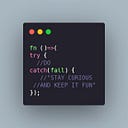How to use CKeditor on your Nextjs or React app
2 min readApr 23, 2022
for the first install package CKeditor use this command;
npm i @ckeditor/ckeditor5-react
npm i @ckeditor/ckeditor5-build-classicor yarn add -D @ckeditor/ckeditor5-react
yarn add -D @ckeditor/ckeditor5-build-classic
Create a components directory under “src” directory and create File with name CKeditor.js inside components, components/CKeditor.js
Paste this code
import React, { useEffect, useRef } from "react";export default function CKeditor({ onChange, editorLoaded, name, value }) {
const editorRef = useRef();
const { CKEditor, ClassicEditor } = editorRef.current || {};useEffect(() => {
editorRef.current = {
CKEditor: require("@ckeditor/ckeditor5-react").CKEditor,
ClassicEditor: require("@ckeditor/ckeditor5-build-classic")
};
}, []);
return (
<>
{editorLoaded ? (
<CKEditor
type=""
name={name}
editor={ClassicEditor}
data={value}
onChange={(event, editor) => {
const data = editor.getData();
onChange(data);
}}
/>
) : (
<div>Editor loading</div>
)}
</>
)
}
typescript version
import React, { useEffect, useRef } from "react";
import { CKEditor } from "@ckeditor/ckeditor5-react";
import ClassicEditor from "@ckeditor/ckeditor5-build-classic";
interface CKeditorProps {
onChange: (data: string) => void;
editorLoaded: boolean;
name: string;
value: string;
}
export default function CKeditor({
onChange,
editorLoaded,
name,
value,
}: CKeditorProps) {
const editorRef = useRef<{ CKEditor: typeof CKEditor; ClassicEditor: typeof ClassicEditor }>();
useEffect(() => {
editorRef.current = {
CKEditor: require("@ckeditor/ckeditor5-react").CKEditor,
ClassicEditor: require("@ckeditor/ckeditor5-build-classic"),
};
}, []);
return (
<>
{editorLoaded ? (
<CKEditor
editor={ClassicEditor}
data={value}
onChange={(event: any, editor: any) => {
const data = editor.getData();
onChange(data);
}}
config={{
toolbar: [
"heading",
"|",
"bold",
"italic",
"link",
"bulletedList",
"numberedList",
"blockQuote",
],
}}
/>
) : (
<div>Editor loading</div>
)}
</>
);
}now you can use CKeditor on your page for this we gonna use the index.js file
import { useEffect, useState } from "react";
import CKeditor from "../components/CKeditor";export default function index() {
const [editorLoaded, setEditorLoaded] = useState(false);
const [data, setData] = useState("");useEffect(() => {
setEditorLoaded(true);
}, []);
return (
<div>
<CKeditor
name="description"
onChange={(data) => {
setData(data);
}}
editorLoaded={editorLoaded}
/> {JSON.stringify(data)} </div>
);
}
typescript version
import { useEffect, useState } from "react";
import CKeditor from "../components/CKeditor";
export default function Index() {
const [editorLoaded, setEditorLoaded] = useState<boolean>(false);
const [data, setData] = useState<string>("");
useEffect(() => {
setEditorLoaded(true);
}, []);
return (
<div>
<CKeditor
name="description"
onChange={(data: string) => {
setData(data);
}}
editorLoaded={editorLoaded}
/>
{JSON.stringify(data)}
</div>
);
}here’s the final result.
Thats it 😁
